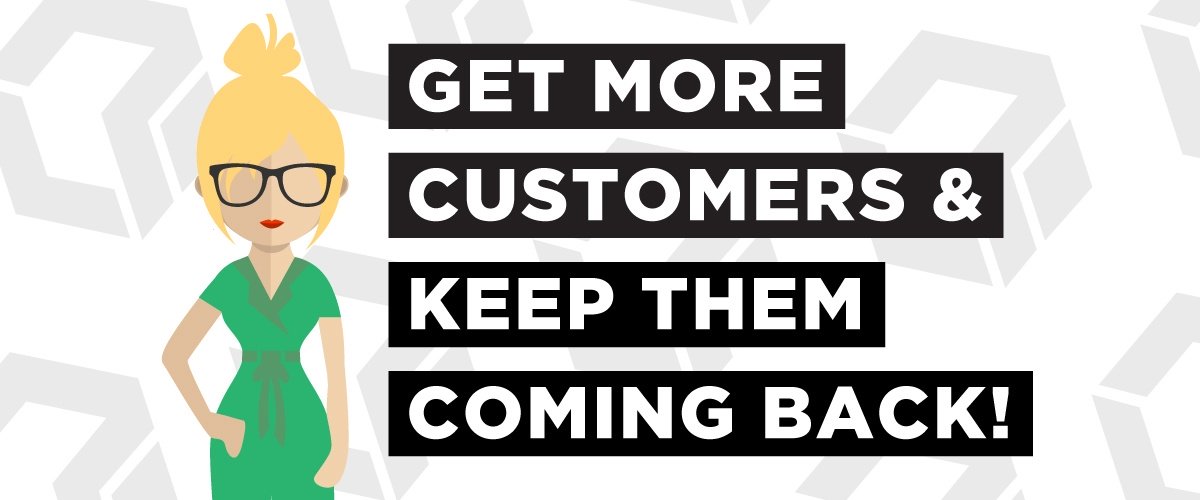Digital marketing is no guessing game. Learn proven strategies, from experts, on how to generate new business and increase customer lifetime value. Follow along our webinar, or skim the key points below, to drive success to your business and calculate your digital marketing results before spending a single ad dollar.
Here’s what you’ll learn:
- Whether or not PPC is right for your business
- Estimating your return with PPC
- Structuring campaigns with non-brand and brand intent
- Calculating lifetime value and common issues to avoid in your PPC strategy
- Building customer loyalty through post-purchase strategies
Thank you for joining our mission to grow business around the world with industry-leading digital strategies.
Is PPC Viable? [2:21]
PPC is a great starting point for businesses looking to drive traffic and generate quality leads. It’s instantaneous, it’s nimble, it’s customizable, and we find it’s the best way to aggregate data for new and existing advertisers.
Identify PPC’s viability for your company and products with 3 things:
- Organic Conversion Rate
- Average Order Value
- Product Margin
Estimate Your Return [5:01]
Once you’ve assessed PPC’s viability, go through the following steps to estimate your return:
- Use the Google Keyword Planner to evaluate the cost-per-click (CPC) of target keywords and create an estimated budget.
- Calculate the theoretical traffic to your site within PPC:
Budget / CPC = Traffic - Once you’ve calculated monthly estimated traffic, apply your conversion rate to get an estimated number of monthly transactions (purchases):
Traffic x Conversion Rate = Transactions - Using your Average Order Value (AOV), multiply it by the transaction estimate to estimate your gross revenue:
Transactions x AOV = Revenue - Keep in mind, gross revenue doesn’t equal net profit. To calculate your net profit, multiply your gross revenue by your margin percentage. Then, subtract the monthly paid advertising cost to find your net profit:
Revenue x Margin – Cost = Profit
Play around with these numbers to figure out your worst scenario, best scenario, and your break-even to establish an honest pathway to mold your PPC strategy around.
Customer Lifetime Value [9:24]
Lifetime value is important for setting goals on what you’re willing to pay for a new client acquisition. You can access information on customer lifetime value from a number of platforms like a client CRM, CMS, payment processor, loyalty program, or Google Analytics.
Calculate customer lifetime value:
Average Order Value x Repeat Sales x Retention = Lifetime Value
Brand v. Non-Brand [11:47]
There are 2 schools of thought when it comes to PPC branded advertising. One school of thought is:
Don’t do it. It’s traffic you’re going to get organically anyway. Why would you pay for it?
The other school of thought is:
You should absolutely do it, because there are a lot of intangibles and tangibles that come with it.
We worked with our client, the Dallas Cowboys, to run some blackout tests in different markets to see what the effect was when we were running brand vs. when we weren’t running brand. In the markets where we weren’t running brand, we saw a 10% drop in revenue. That 10% drop represents revenue lost to other competitors or other sources. Our test showed proof of branded campaigns to be beneficial, but honor your business and your goals when conducting your own tests.
Profitable PPC [14:35]
Where to start?
If you’re running PPC and it isn’t working, start here:
- Google Search Ads: Brand
- Low-hanging fruit, low-cost, maximize revenue
- Google Shopping Ads
- High conversion rates, low cost
- Remarketing Lists for Search & Shopping Ads
- Re-engage non-converters
- Google Search: Long-Tailed Non-Brand
- Target specific keywords with a better chance of converting. Rather than “children’s apparel,” go for “Dr. Seuss kids pajamas.”
Campaign Structure:
In terms of profitable PPC, one of the most important things to a high return on ad spend is campaign structure. The general rule of thumb is that you should section out your campaigns as granular as possible because there are a lot of different settings at the campaign level that influence profitability
Ways to segment your campaigns:
- Brand or Non brand
- Audience (mens, womens, etc)
- Category
- Other nuances
Example: Campaign Name: REI > Womens > Apparel > Jackets.
Building Loyalty [23:06]
Now that you’ve generated customers, how do increase their value?
If a customer is purchasing with you often and for a long time, they could be classified as loyal. When you have a loyalty program in place after that first purchase is made, you can use points or other rewards on actions being taken to encourage that customer to come back and purchase from your business.
Ways to increase customer value:
- Build loyalty throughout the customer life cycle
- Build loyalty around your brand
- Tiered programs
- Focus on personalization
- Seamless between online and in store
Turn One Time Buyers Into Lifetime Customers [30:06]
When a potential customer crosses the threshold and makes a purchase, there is still work to be done to keep them coming back.
Win over your customers with the following steps:
- Post purchase thank you emails
- Reward available reminder
- Run double point weekends
- Bonus points to increase Average Order Value (AOV) & repeat purchase
- For example, give 100 bonus points for orders above $100 or reward for purchases during certain promotional times.
- Free gifts for purchases made with points
Turn At-Risk Customers Into Repeat Customers [34:23]
When we’re faced with customers who are at-risk, draw them back into your funnel by the following:
- Credit customers with points/rewards
- Moving customers up a tier
- Exclusive rewards for loyalty program members
Expand your digital marketing strategies to what you can prove works. Your business is the main event and PPC is your invitation to get everyone there. Once you have people at your “event” your loyalty program is the open bar that keeps them dancing all night long.



